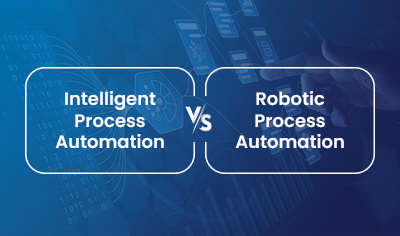As businesses embrace digital transformation initiatives to adapt quickly to changing market dynamics, they often find themselves struggling with a set of challenges. These may range from legacy systems that resist modernization and compliance with an array of regulations that require stringent oversight to orchestrating complex workflows that demand precision, attention, and speed.

This is where automation steps in as a potent ally, promising to relieve businesses drowning in a sea of manual, repetitive, and rule-based tasks, eliminating errors, and ultimately empowering them to thrive in an increasingly complex landscape. While the allure of adopting automation seems fascinating to businesses of all sizes, it comes with its own set of challenges.
Power Automate nestled in the Power Platform ecosystem shines as a beacon of hope by providing an antidote to the impediments that often hinder the automation journey. In other words, Microsoft Power Automate has emerged as an enabler for businesses by transforming automation challenges into opportunities for innovation, growth, efficiency, and scalability.
What is Power Automate?
A cloud-based platform, Power Automate allows users to create automated workflows between applications and services. It connects seamlessly with different Microsoft products and third-party services to automate mundane, repetitive processes, freeing up time for strategic, revenue-generating activities.
Power Automate utilizes a trigger-action model to create automated workflows or ‘flows’. The trigger initiates the workflow while the action occurs once the trigger has been activated. For instance, when a user submits a form on a website, the relevant details are automatically extracted to Dynamics 365 Business Central. These workflows thus eradicate the need for manually filling up data. In other words, Power Automate redefines operations by minimizing manual workloads and reducing the scope for errors, enabling businesses to do much more with less effort.
Navigating the Automation Challenges and How Power Automate Leads the Way
1. Cost Control
One of the significant automation challenges is cost control, which Microsoft Power Automate development effectively addresses. Implementing automation solutions is an expensive affair, especially when custom solutions are developed from scratch or extensive IT involvement is required.
The good news is that Microsoft Power Automate democratizes automation and makes it an accessible and affordable automation solution to organizations of all sizes. Power Automate does so by offering a slew of cost control features, such as pre-built templates, low-code/no-code development, scalable licensing, monitoring capabilities, and more.
Today, individuals with varying technical expertise and backgrounds are able to automate workflows by simply using the low-code/no-code approach. This eliminates the need for hiring specialized IT programmers or developers, which in turn, reduces development costs. Additionally, Power Automate comes with a rich library of pre-built templates and connectors for common automation tasks such as data synchronization, email notifications, and approval workflows that further bring down development time and costs.
2. Scalability
Scalability is another critical automation challenge that Microsoft Power Automate effectively addresses. Traditional automation solutions are either too complex to scale or lack the capabilities to accommodate a growing number of users, handle additional workflows, or integrate multiple data sources. On the other hand, Power Automate offers several solutions for scalability that quickly adapt to the evolving needs of an organization.
For instance, Power Automate comes with different licensing plans designed to meet an organization’s specific requirements. As organizations grow and evolve, they can easily upgrade to a more comprehensive plan tailored to their automation needs. This capacity planning helps businesses find a scalable solution that aligns with their budget and growth trajectory.
In addition, Power Automate allows easy integration with Azure, Office 365, and other Microsoft services. This seamless connectivity enables users to incorporate additional features and capabilities as needed, ensuring that automation solutions remain in sync with changing business requirements.
Achieve Operational Excellence With Power Automate Consulting
3. Incompatibility with Legacy Systems
Incompatibility with legacy systems is one of the common automation challenges faced by several enterprise-level organizations. Many businesses continue to rely on older systems and technologies that are not inherently compatible with modern, cloud-based automation tools. Power Automate tackles this issue by providing a range of connectors and adaptors that bridge the gap between legacy systems and modern automation workflows. These connectors facilitate painless data retrieval, data transfer, and process execution between legacy systems and other business applications.
Besides, Power Automate offers custom API integration capabilities to connect with legacy systems. This ensures that even the most outdated technologies are integrated with modern automated workflows. This allows organizations to extend the lifespan of existing systems and derive value from them.
4. Error Handling
Automation is not immune to errors and Power Automate addresses this challenge effectively by offering robust built-in error-handling capabilities to detect, manage, and resolve errors in automation workflows. For instance, users can define custom error messages using the built-in error-handling capabilities of Power Automate to provide specific details about the nature of the error. This not only helps in timely identification of the problem but also allows for quick resolution, preventing prolonged disruptions to the workflow.
Besides, users are also able to create notification alerts in response to errors. Whenever an error arises, the relevant stakeholders are notified immediately, allowing them to take action promptly. The best part is that users can set up notification delivery via text messages, email, or any other preferred communication method.
5. Complex Workflow Management
Complex workflow management is a critical challenge in automation since it involves multiple steps, approvals, and conditional actions. Microsoft Power Automate addresses this challenge by offering various features and capabilities including a visual workflow designer, templates and connectors, parallel and conditional execution, and more. In addition to simplifying the management of complex workflows, Power Automate empowers organizations to design, execute, and maintain automation processes with confidence. This results in improved operational efficiency.
Power Automate in Action: Use Cases Across Industries
- Healthcare: Power Automate assists with seamless patient onboarding and registration. When a patient submits their documents at the time of hospitalization, workflows are created to extract relevant information from these documents and update it in the Electronic Health Record (EHR) system. Power Automate also helps with follow-up communication. Once a patient is discharged, automated reminders are sent to the patients for visits and medication.
- Retail: Power Automate plays an indispensable role in the retail industry. The platform automatically pulls data such as product prices, date of transaction, etc., from invoices, allowing stores to process invoices faster and with fewer errors. Power Automate also simplifies customer communication as it becomes easier to send automated emails updating customers on their order status. It also helps convey messages informing a customer about special offers, discounts, and loyalty programs.
- Finance: Power Automate helps streamline several time-intensive processes in the financial services industry, boosting accuracy and efficiency. It integrates easily with tax calculation software, enabling painless tax calculation and filings and ensuring compliance with tax laws. Power Automate also assists investment managers in tracking investments and assets and staying updated on a portfolio’s performance through automated alerts and notifications.
Summing Up
Power Automate for Desktop is not just a tool- it’s the compass that guides organizations to navigate through the maze of intricate workflows to conquer complexities and unlock the world of endless possibilities. If you are planning to step into an era powered by automation to drive innovation, productivity, and efficiency whilst staying competitive, consider seeking consultation from a professional company that has rich prowess in transforming automation challenges into opportunities.





